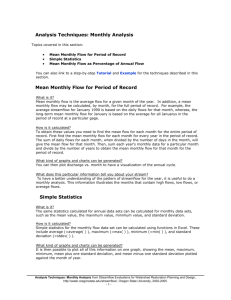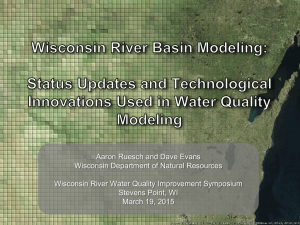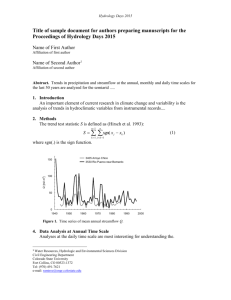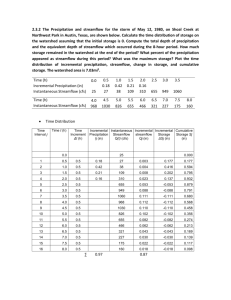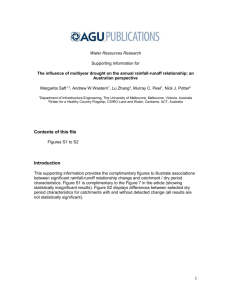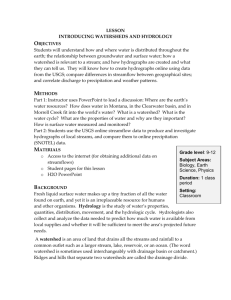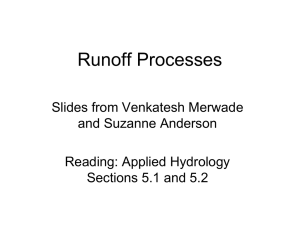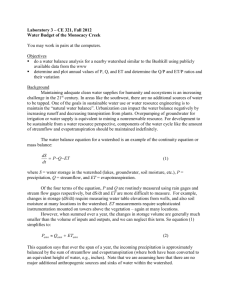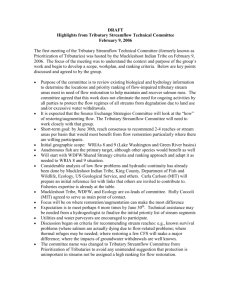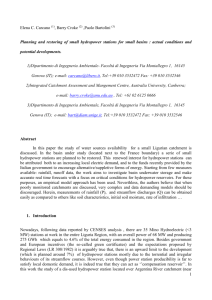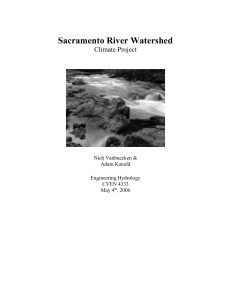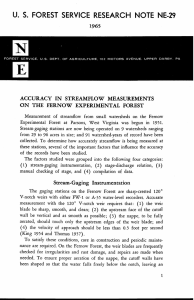Simulation of daily stream flows for sub-catchments of the
advertisement
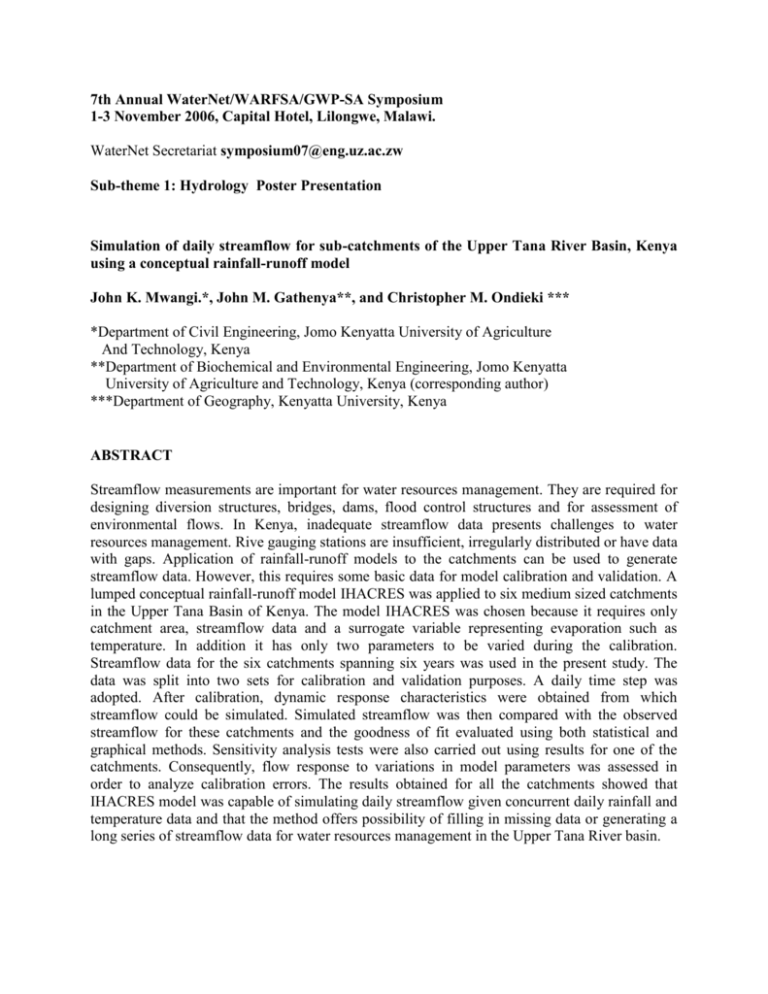
7th Annual WaterNet/WARFSA/GWP-SA Symposium 1-3 November 2006, Capital Hotel, Lilongwe, Malawi. WaterNet Secretariat symposium07@eng.uz.ac.zw Sub-theme 1: Hydrology Poster Presentation Simulation of daily streamflow for sub-catchments of the Upper Tana River Basin, Kenya using a conceptual rainfall-runoff model John K. Mwangi.*, John M. Gathenya**, and Christopher M. Ondieki *** *Department of Civil Engineering, Jomo Kenyatta University of Agriculture And Technology, Kenya **Department of Biochemical and Environmental Engineering, Jomo Kenyatta University of Agriculture and Technology, Kenya (corresponding author) ***Department of Geography, Kenyatta University, Kenya ABSTRACT Streamflow measurements are important for water resources management. They are required for designing diversion structures, bridges, dams, flood control structures and for assessment of environmental flows. In Kenya, inadequate streamflow data presents challenges to water resources management. Rive gauging stations are insufficient, irregularly distributed or have data with gaps. Application of rainfall-runoff models to the catchments can be used to generate streamflow data. However, this requires some basic data for model calibration and validation. A lumped conceptual rainfall-runoff model IHACRES was applied to six medium sized catchments in the Upper Tana Basin of Kenya. The model IHACRES was chosen because it requires only catchment area, streamflow data and a surrogate variable representing evaporation such as temperature. In addition it has only two parameters to be varied during the calibration. Streamflow data for the six catchments spanning six years was used in the present study. The data was split into two sets for calibration and validation purposes. A daily time step was adopted. After calibration, dynamic response characteristics were obtained from which streamflow could be simulated. Simulated streamflow was then compared with the observed streamflow for these catchments and the goodness of fit evaluated using both statistical and graphical methods. Sensitivity analysis tests were also carried out using results for one of the catchments. Consequently, flow response to variations in model parameters was assessed in order to analyze calibration errors. The results obtained for all the catchments showed that IHACRES model was capable of simulating daily streamflow given concurrent daily rainfall and temperature data and that the method offers possibility of filling in missing data or generating a long series of streamflow data for water resources management in the Upper Tana River basin.
